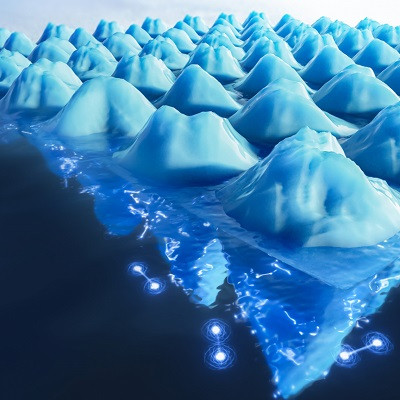
2020-08-23
Visited : 2448
According to research led by scientists at Rutgers University, graphene buckles when cooled while attached to a flat surface, resulting in beautiful pucker patterns that could be beneficial in nano-robotics, quantum computing, and superconductors. Cooled graphene mimics the effect of enormous magnetic fields that would benefit electronics.
Graphene, an extremely thin two-dimensional layer of the graphite used in pencils, buckles when cooled while attached to a flat surface, resulting in beautiful pucker patterns that could benefit the search for novel quantum materials and superconductors, according to Rutgers-led research in the journal Nature.
Quantum materials host strongly interacting electrons with special properties, such as entangled trajectories, that could provide building blocks for super-fast quantum computers. They also can become superconductors that could slash energy consumption by making power transmission and electronic devices more efficient.
“The buckling we discovered in graphene mimics the effect of colossally large magnetic fields that are unattainable with today’s magnet technologies, leading to dramatic changes in the material’s electronic properties,” said lead author Eva Y. Andrei, Board of Governors professor in the Department of Physics and Astronomy in the School of Arts and Sciences at Rutgers University–New Brunswick. “Buckling of stiff thin films like graphene laminated on flexible materials is gaining ground as a platform for stretchable electronics with many important applications, including eye-like digital cameras, energy harvesting, skin sensors, health monitoring devices like tiny robots and intelligent surgical gloves. Our discovery opens the way to the development of devices for controlling nano-robots that may one day play a role in biological diagnostics and tissue repair.”
The scientists studied buckled graphene crystals whose properties change radically when they’re cooled, creating essentially new materials with electrons that slow down, become aware of each other and interact strongly, enabling the emergence of fascinating phenomena such as superconductivity and magnetism, according to Andrei.
Using high-tech imaging and computer simulations, the scientists showed that graphene placed on a flat surface made of niobium diselenide, buckles when cooled to 4 degrees above absolute zero. To the electrons in graphene, the mountain and valley landscape created by the buckling appears as gigantic magnetic fields. These pseudo-magnetic fields are an electronic illusion, but they act as real magnetic fields, according to Andrei.
“Our research demonstrates that buckling in 2D materials can dramatically alter their electronic properties,” she said.
The next steps include developing ways to engineer buckled 2D materials with novel electronic and mechanical properties that could be beneficial in nano-robotics and quantum computing, according to Andrei.
Read the original article on Rutgers University.